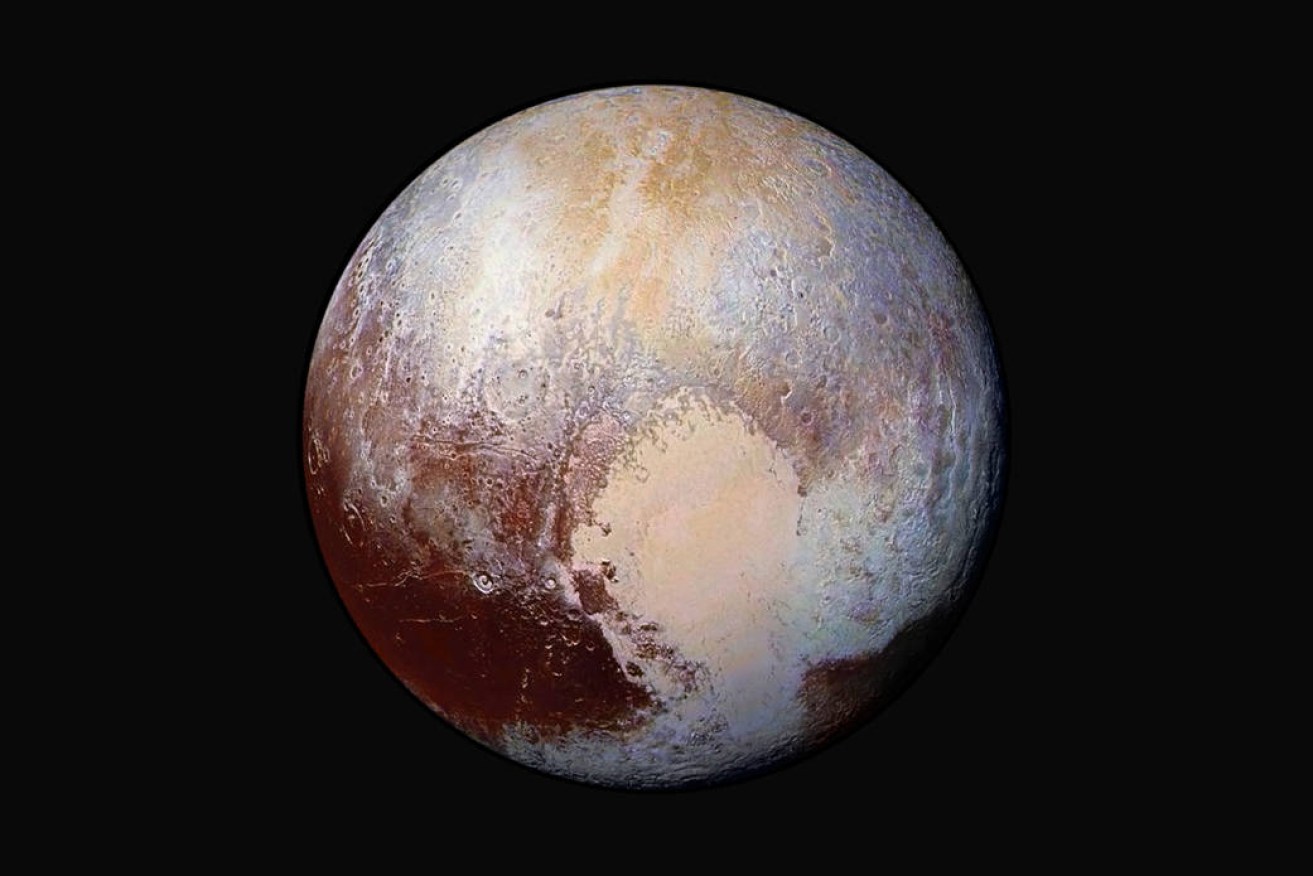Pluto doesn’t just have a heart, the damn thing is beating!


Pluto's heart-shaped feature, discovered in 2015, has served as a protest against its demotion to dwarf planet. Photo: NASA/JHUAPL/SwRI
Ever since Pluto was demoted from being our solar system’s ninth planet – nearly 14 years years ago – some astronomers have gone out of their way to ensure Earthlings maintain the love for the far-flung, weirdly tattooed lump of ice (with a small rocky core).
When several hundred astronomers voted in 2006 to reclassify Pluto as a dwarf planet – in opposition to public affection and protest, and many tear-stained letters from children – the most detailed images (from the Hubble telescope) indicated an almost featureless ball.
In 2015, the New Horizons spacecraft sent back images that suggested Pluto had taken the astronomer snub personally – it was revealed to not only be heart-coloured, but have a giant and shiny heart-shaped region.

A letter from Emerson York berating astronomer Neil deGrasse Tyson who unapologetically led the campaign for Pluto’s demotion. Emerson was passionate but polite, signing off as “your friend”.
What made this cosmic moment even more poignant was the fact that the ashes of Clyde Tombaugh, the astronomer who discovered Pluto in 1930, were onboard (and will be the first ashes to leave the solar system).
The heart-shaped feature was informally named “Tombaugh Regio” (Tombaugh Region.)
Then it turned that Tombaugh Regio consisted of consisted of two distinct geological features, leading The Washington Post to report: ‘New data reveals that Pluto’s heart is broken’ – a observation that echoed around the world (the one we live on).
Since then, Pluto was revealed to have giant, icy dunes, mysterious giant blades, possible ingredients for life, “snakeskin terrain“, and further emotional aspects related to that spooky heart – namely that it was so heavy, that it was sinking.

In 2002, the Hubble telescope managed to detect a shiny something on Pluto – this was later revealed to be its now-famous heart. Photo: Hubble
“Pluto’s big heart weighs heavily on the small planet, leading inevitably to depression,” Douglas Hamilton, a professor of astronomy at the University of Maryland, and lead author of the attendant study, said in a statement.
In 2018, The New Daily reported on research that was claimed to be the smoking gun that Pluto was a planet and should be re-classified as such.
“It’s more dynamic and alive than Mars,” the study author said.
“The only planet that has more complex geology is the Earth.”
Things went quiet for a while. Now comes news that Pluto’s heart is actually beating – and that this mechanism “controls Pluto’s winds and may give rise to features on its surface,” according to a new study.
As the study authors observe, nitrogen gas comprises most of Pluto’s thin atmosphere, along with small amounts of carbon monoxide and the greenhouse gas methane.
Frozen nitrogen also covers part of Pluto’s surface in the shape of a heart.
During the day, a thin layer of this nitrogen ice warms and turns into vapour.
At night, the vapour condenses and once again forms ice.
“Each sequence is like a heartbeat, pumping nitrogen winds around the dwarf planet,” the authors write.
They conclude that this beating cycle pushes Pluto’s atmosphere to circulate in the opposite direction of its spin – a unique phenomenon called retro-rotation.
As air whips close to the surface, it transports heat, grains of ice and haze particles to create dark wind streaks and plains across the north and north-western regions.
“This highlights the fact that Pluto’s atmosphere and winds – even if the density of the atmosphere is very low – can impact the surface,” said Tanguy Bertrand, an astrophysicist and planetary scientist at NASA’s Ames Research Centre in California and the study’s lead author.








